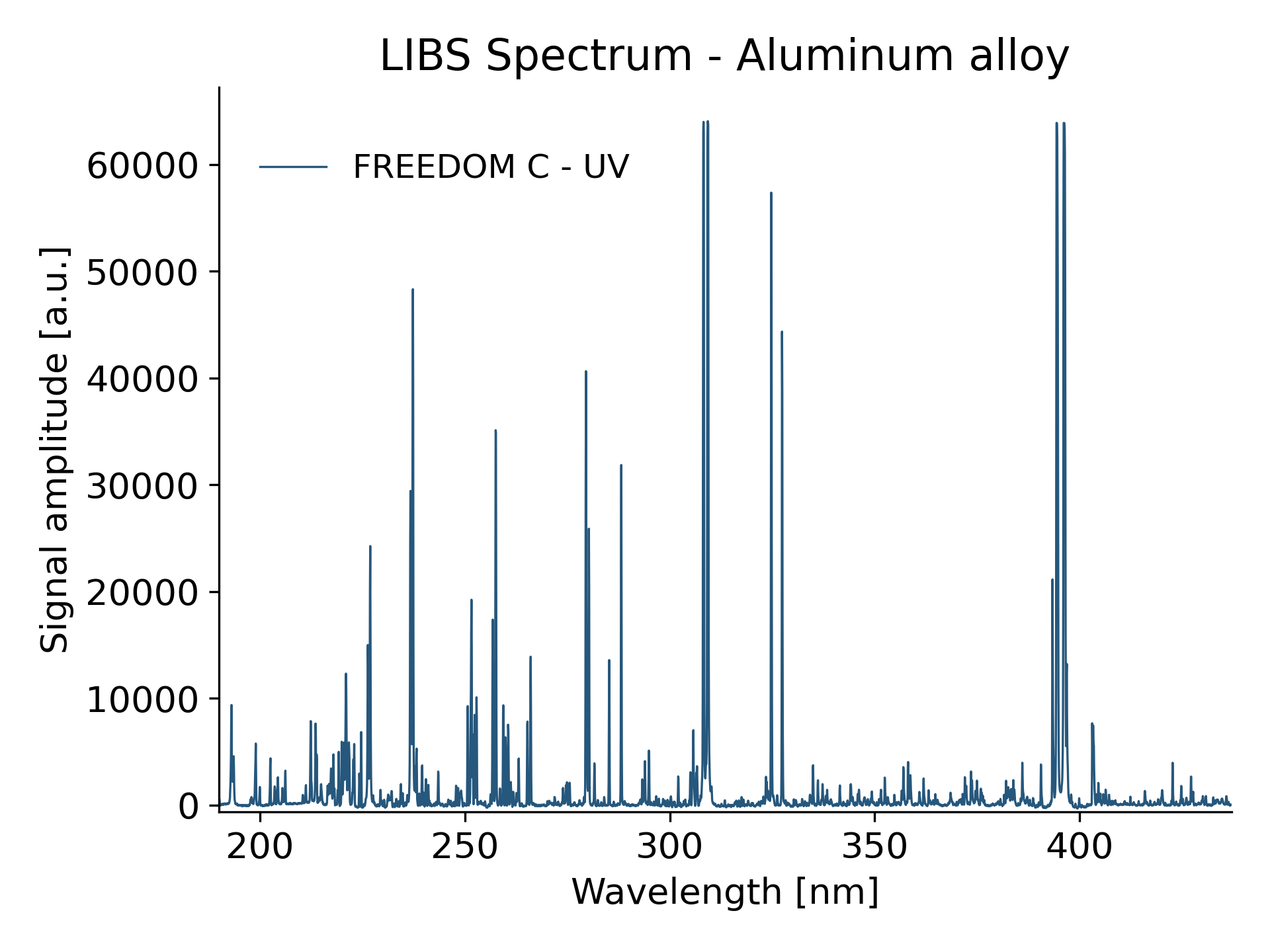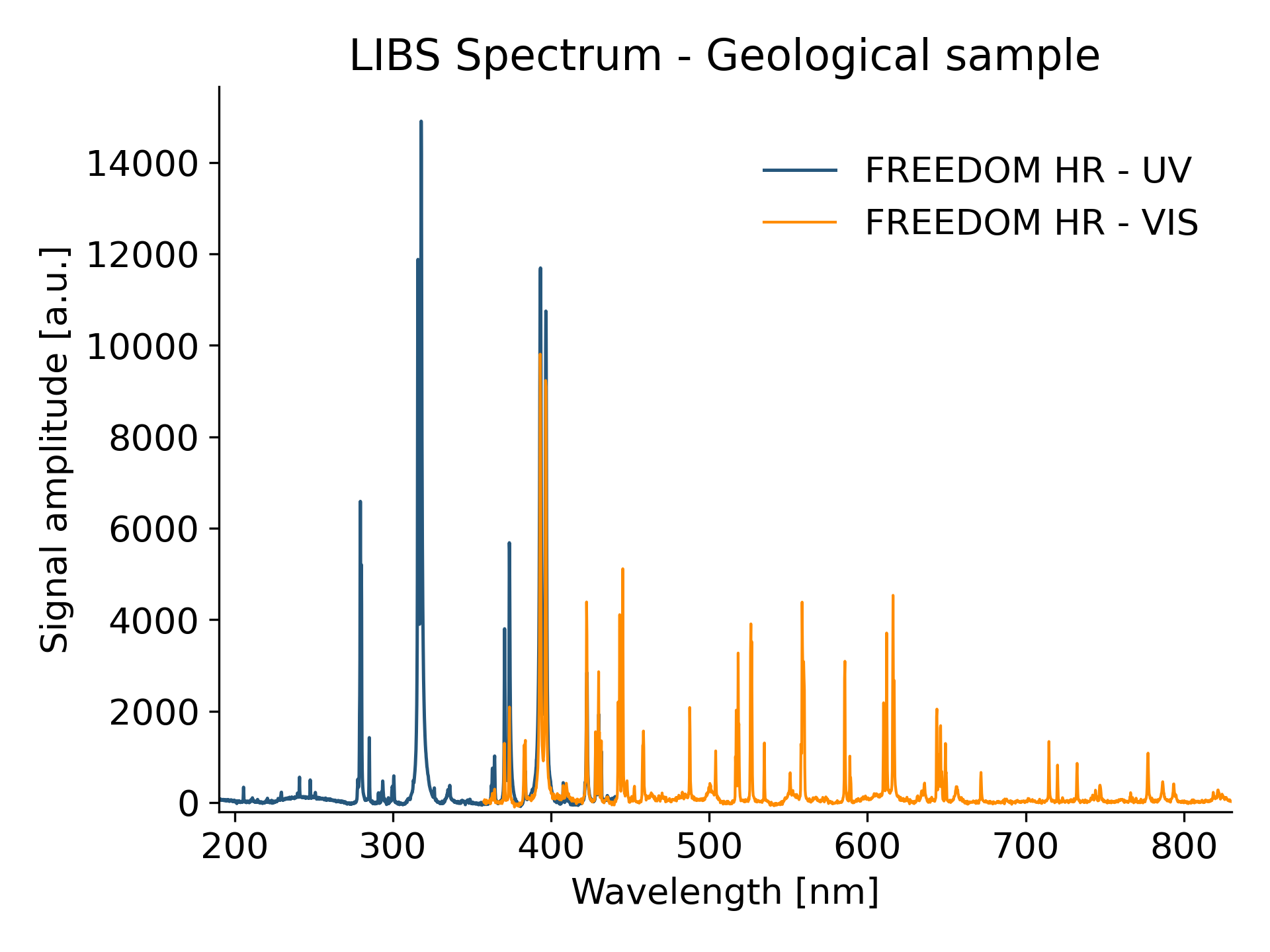Laser Induced Breakdown Spectroscopy (LIBS)
Why Ibsen Photonics for LIBS
Laser Induced Breakdown Spectroscopy (LIBS) requires environmentally stable spectrometers offering good resolution and sensitivity, typically across a broad wavelength area. Precise triggering in relation to the LIBS laser pulse is necessary for consistent, repeated measurements of the plasma.
Using transmission gratings optimized for high and even diffraction efficiency over the required bandwidth ranges allows Ibsen Photonics to design compact LIBS spectrometers with high environmental stability and optimal resolution and sensitivity. Our electronics enable accurate triggering, ensuring you get the most precise timed measurement of your plasma.
If you have special requirements, we can work with you to design a customized spectrometer for integration into your LIBS system at a competitive cost.
Ibsen Photonics makes a difference in your LIBS system:
Advantages of using Ibsen Photonics for LIBS
Ibsen’s spectrometers and in-house manufactured transmission gratings provide unparalleled sensitivity and optical designs optimized for LIBS.
Our LIBS transmission gratings offer high and even diffraction efficiencies from 178 nm in the UV to 1,100 nm in the SWNIR, a typical bandwidth range used for LIBS.
Our experienced R&D teams have over 200 years of combined tenure and experience optimizing grating and spectrometer designs to achieve the best possible performance, cost, and size effective platforms.
These factors yield the following benefits:


Geological sample LIBS spectrum is provided by MinEx CRC Project 3 (Australia).
Transmission gratings for LIBS
At Ibsen Photonics, we design and manufacture best-in-class surface relief transmission gratings in fused silica for wavelengths between 175 nm and 2,500 nm. Our UV, VIS, and VIS-NIR gratings designed for LIBS cover the range from 178 nm to 1,100 nm and feature an impressive diffraction efficiency of >50% across the entire wavelength range (see figure).
Our gratings provide unparalleled high broadband efficiency, enabled by optimized groove profiles, a thin optical path, and a high refractive index contrast. The inherent nature of fused silica ensures our gratings are environmentally stable while working in transmission, providing angle insensitivity and vibrational stability.
We design our LIBS spectrometers to perfectly match and supplement the performance of our gratings, but we also supply gratings for use in your own LIBS spectrometer design.

Spectrometers for LIBS
Ibsen Photonics spectrometers are compact, environmentally robust, and able to cover a large wavelength range in a single spectrometer due to athermal spectrometer designs and the high and even broadband performance of our gratings. Therefore, our spectrometers are prime candidates for any LIBS system.
Our spectrometers are designed for use with different detectors, depending on the specific needs for your LIBS system. The Hamamatsu S13496N 4096-pixel CMOS detector is recommended for high resolution LIBS, while the Hamamatsu S11639 2048 pixel CMOS detector can be used when resolution is less critical. The Hamamatsu S11156 2048 pixel CCD detector is recommended when high dynamic range and extremely tight exposure control are needed.
A few elements have main spectral lines that occur outside the transmission window of air. This means that in order to detect the LIBS signal from these elements, one has to purge the environment around the sample and the spectrometer with an inert gas, such as Argon, which does not absorb light at these wavelengths. Ibsen Photonics has solved this by modifying our FREEDOM HR platform to include purging valves for gas flow and moving the detectable wavelength window down to 178 nm.

More resources
Want to know more?
For further information see below.